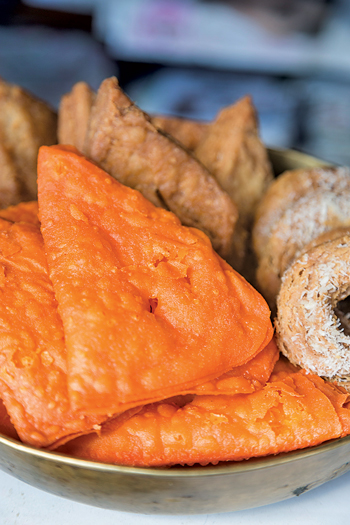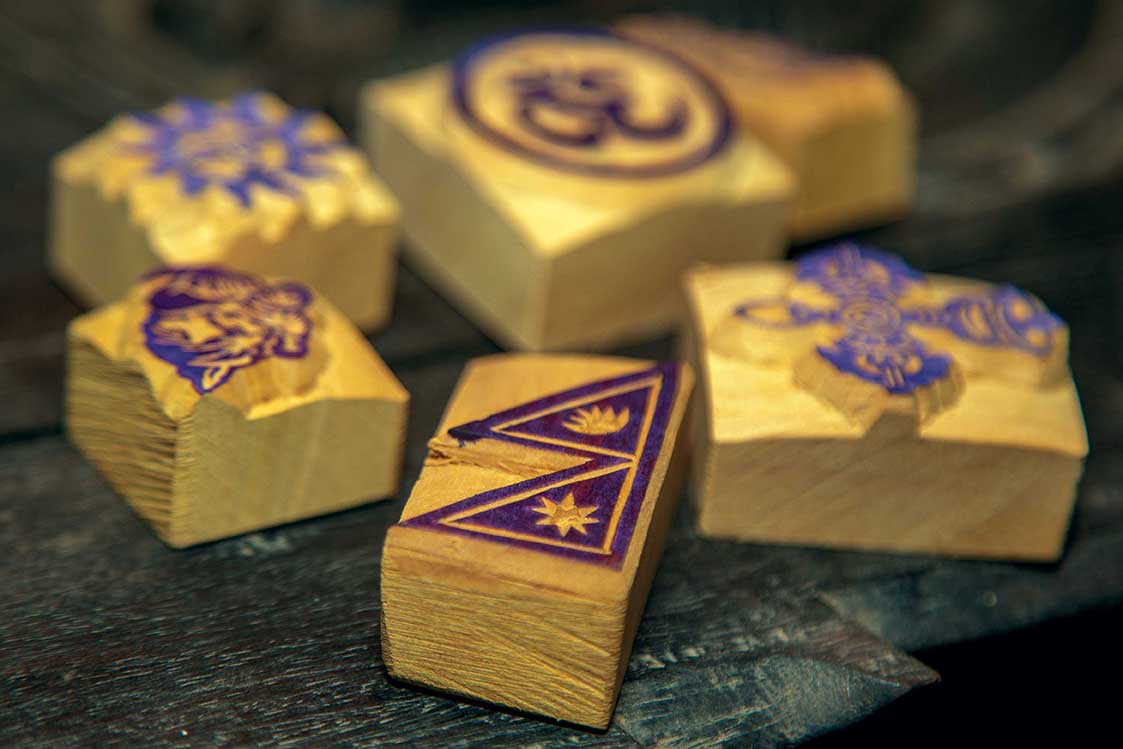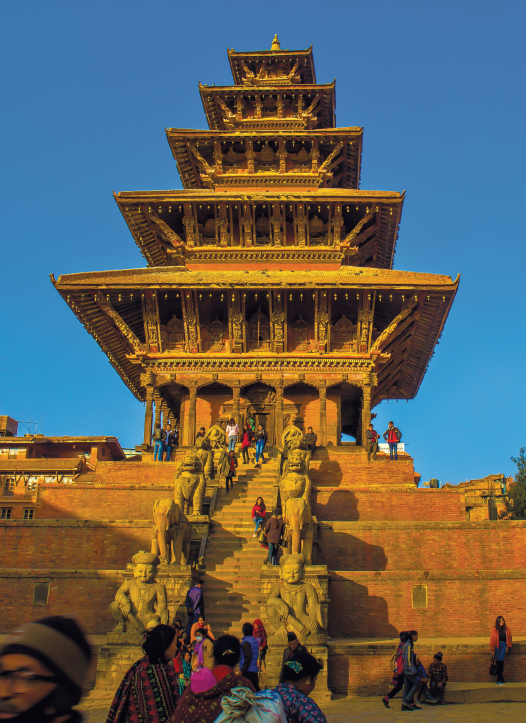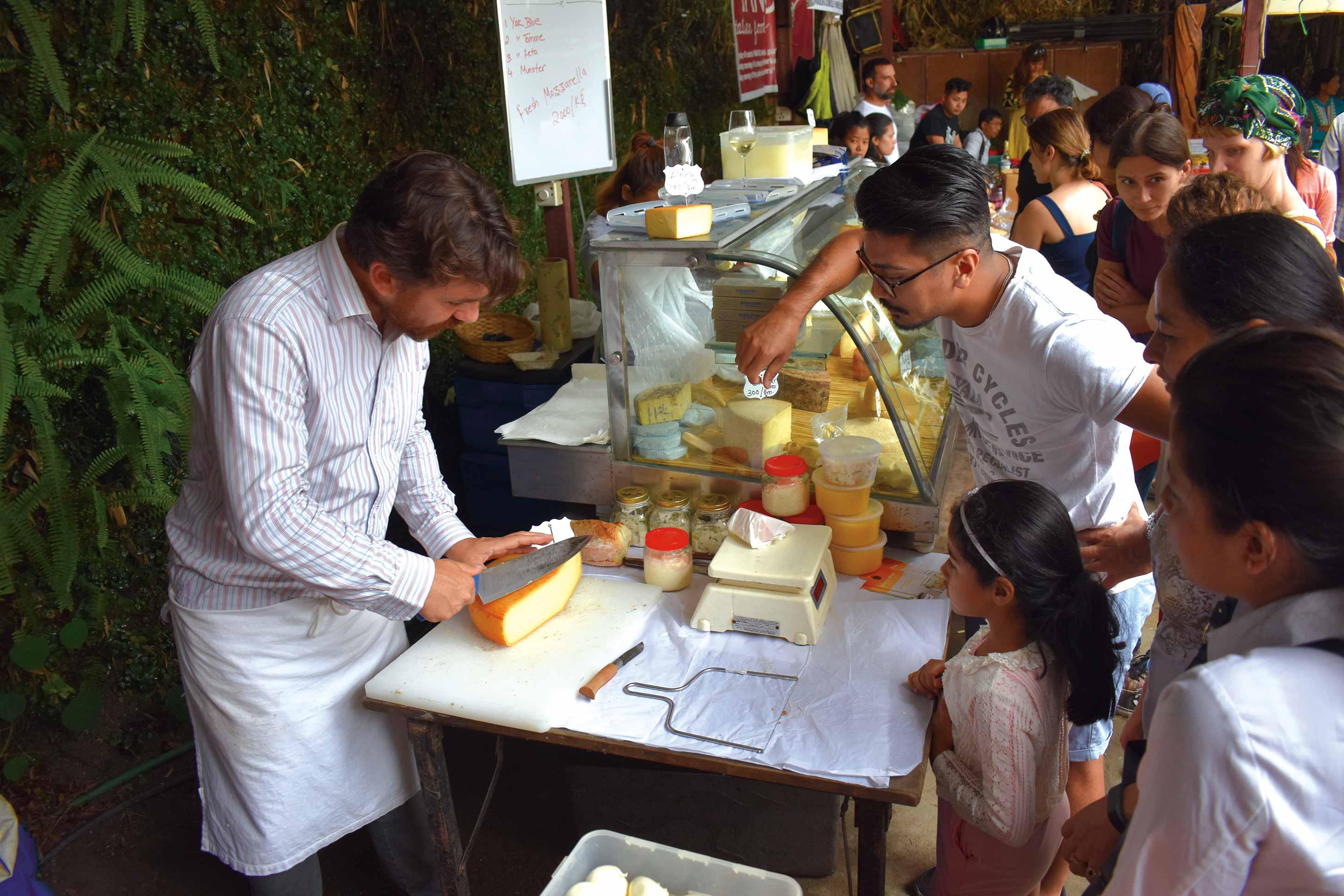Reminiscing nimki, the savory snack that has a special place in every festive Nepali’s palette.
The anticipatory excitement for festivals starts weeks before they are occasioned and leave behind a trail of good things - mostly memories, laughter and sumptuous food. The one food item that trails longer than most and is a must have festive favorite is the triangular shaped delicacy called nimki. The slightly salty and sweet mouthful, that pairs perfectly with a cup of warm tea shared with your family or friends. 
Nimkis are a ubiquitous part of every festival and ceremony in Nepali culture. What distinguishes it on the dinner table, amongst other regular cheerful delights, is its fiery orange color that is a statement onto itself. You can recognize it from afar in a sweet shop, stacked in a perfect pile, waiting to be bagged and consumed happily.
This snack occupies such a pervasive presence in our ceremonies mainly because of its namesake characteristic. In a festive palette which is dominated by sweets, nimki is the salty one. It provides a much-appreciated relief to our taste buds. For marriage ceremonies, it is used as a colorful decoration when the groom sends a host of gifts along with sweets to the bride.
Traditionally snacks and sweets such as nimki were prepared by the Rajkarnikars. There are considerably few Rajkarnikars making sweets as their main occupation these days. However, those who remain have much to share – with both their extensive knowledge of making sweets, and the stories that such an experience gives.
Although Rajkarnikars in Patan are unsure about the exact description of nimki’s origin story and place, they say that the recipe has been in their family “for generations.” What they do know is that this creation made out of clarified butter, flour, salt and food-coloring has never lost its popularity amid the valley residents. In the old days, Ranas ordered huge numbers of sweets, including nimkis, for every festival or social function. It was also a favorite breakfast and snack item among them.
73-year-old Bindira Rajkarnikar has been working in sweet shops since she was a little girl of nine. She still runs a small shop in the Maru Galli of Patan, offering insights into our (sweet) history. She hints how the sweet shops in the main Durbar Square area are originally from the same line, but have since followed their own business. She remembers those specific days of our lunar calendar, like mother’s day and father’s day, when the shop would overflow with sweets and people.
“But there are more people to buy and eat these sweets. Consuming it is no longer limited to affluent people (like the Ranas),” she shares. The only thing to have changed is the quality of these sweets, for resources are scarce to meet the traditional standards. Despite that, nimkis are still popular and consumed eagerly.
In Newari sweet culture, the lakhamari is considered the favorite, but nimkis have a variety and a place of their own. Sweets like pantusha, khaaja (punjabi), dui rang, fini, etc, are all nimki’s cousins, made diverse by the color play, geometric structure, and even the sweetness. But they are made with almost the same technique.
So next time you pass by a sweet shop, give nimkis a second thought and maybe take them home for snacktime!











